Begonia grandis, commonly known as the Hardy Begonia or Japanese Begonia, is a fascinating plant that belongs to the Begoniaceae family. This species of begonia is native to China and Japan and is celebrated for its unique characteristics. Understanding the fundamentals of Begonia grandis is essential for successful cultivation.
Begonia Grandis Origin
Begonia grandis is native to the temperate regions of eastern Asia, primarily China and Japan. In its natural habitat, it can be found in shaded woodland areas, often growing near streams or riverbanks. The plant’s adaptation to these environments makes it an ideal choice for gardeners seeking a charming and resilient addition to their outdoor spaces.
Begonia Grandis Classification
This begonia belongs to the Begoniaceae family, which is renowned for its diversity of species. Within this family, Begonia grandis is classified as a perennial herbaceous plant. Its unique features set it apart from other begonia species, making it a popular choice among garden enthusiasts.


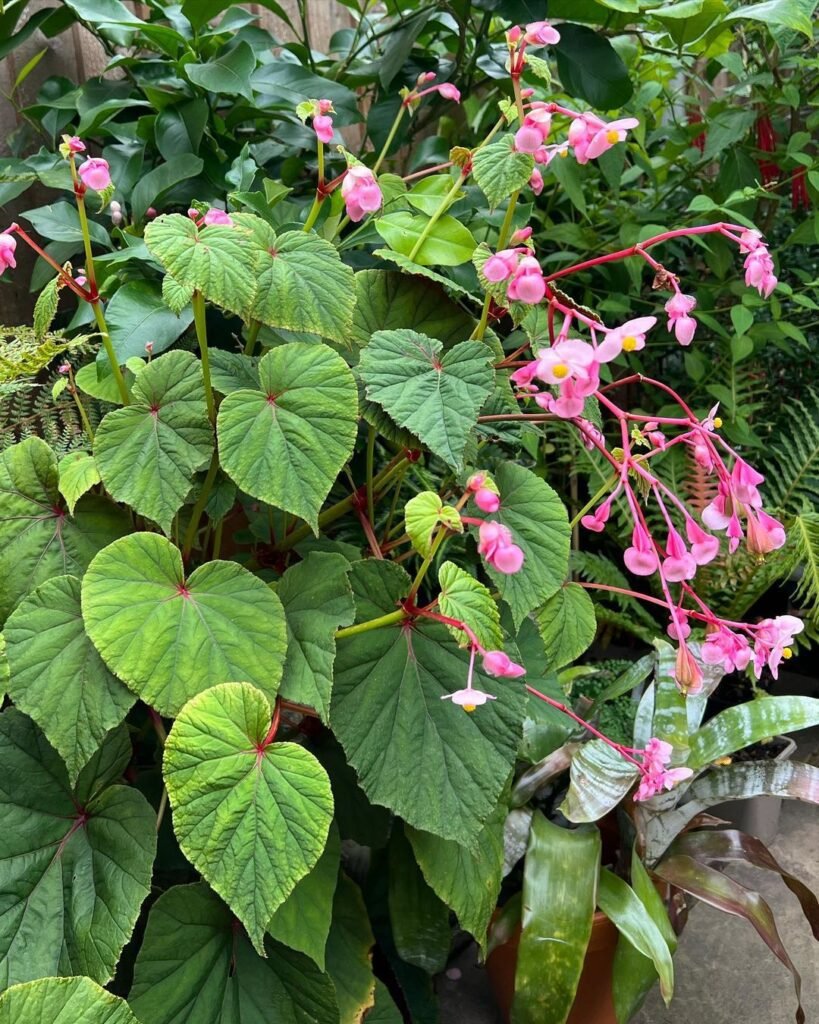
Genus Species
Begonia grandis is a member of the Begonia genus and is known for its striking appearance. It boasts distinct characteristics that make it an attractive addition to any garden or indoor setting.
Species Characteristics
- Foliage: The foliage of Begonia grandis is one of its most captivating features. The leaves are typically heart-shaped, asymmetrical, and have a vibrant green color. Some varieties also exhibit silver or maroon markings, adding to their aesthetic appeal.
- Flowers: The plant produces delicate, pendulous flowers with waxy petals. These blooms come in shades of pink, rose, or white and often have a graceful appearance, resembling delicate bells.
- Size: Begonia grandis can grow to a height of 12 to 18 inches, making it a suitable choice for both ground cover and container gardening.
- Hardiness: This begonia is known for its hardiness, which allows it to thrive in various climatic conditions. It is particularly well-suited to regions with mild to moderate temperatures.
- Growing Season: Typically, Begonia grandis starts to bloom in late summer or early fall. This late-season flowering adds a touch of elegance to your garden when many other plants have finished their blooming cycle.
Begonia Grandis Appearance


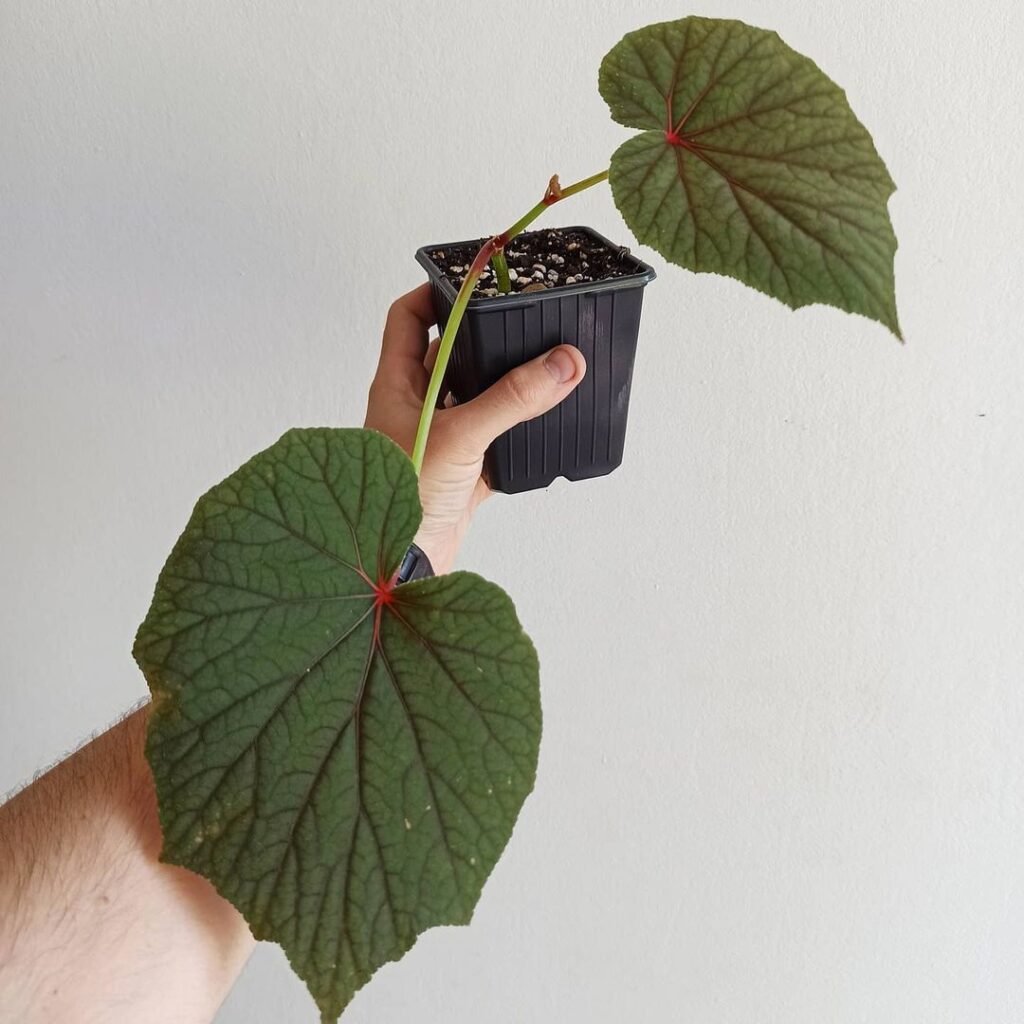
The distinctive appearance of Begonia grandis makes it a captivating choice for any garden or indoor space. Understanding its visual characteristics is key to appreciating its beauty fully.
Leaf Variations
- Green Leaf Variety: The most common variety of Begonia grandis features vibrant green leaves with elegant asymmetrical heart shapes. These leaves have a glossy finish and create a lush, vibrant look in your garden.
- Silver-Marked Leaves: Some varieties of Begonia grandis exhibit silver markings on their leaves, adding a touch of sophistication to their appearance. These silver markings contrast beautifully with the green foliage.
- Maroon-Marked Leaves: Another variation includes maroon or reddish markings on the leaves. These striking patterns give the plant an even more eye-catching aesthetic.
Flower Varieties
- Pink Flowers: The majority of Begonia grandis plants produce lovely pink flowers. These blossoms hang gracefully from delicate stems, creating a charming and romantic ambiance in your garden.
- Rose-Colored Flowers: Some varieties of Begonia grandis feature rose-colored flowers, which can add a touch of warmth and elegance to your outdoor or indoor space.
- White Blooms: There are also white-flowering varieties of this begonia, which bring a sense of purity and simplicity to your garden.
Growth Habit
- Begonia grandis typically grows to a height of 12 to 18 inches, creating a low, mounding growth habit. This makes it suitable for ground cover, border planting, or container gardening.
- The plant’s arching stems and cascading flowers give it an elegant and graceful appearance, making it a perfect choice for hanging baskets and elevated planters.
Table: Common Varieties of Begonia Grandis
| Variety | Leaf Markings | Flower Color |
|---|---|---|
| Green Leaf | None | Pink |
| Silver-Marked | Silver | Pink |
| Maroon-Marked | Maroon/Reddish | Pink |
| Rose-Colored | None | Rose |
| White Blooms | None | White |
Understanding the various appearances of Begonia grandis and its different varieties allows you to select the type that best suits your personal taste and garden design. Next, we’ll explore essential care tips to ensure your Begonia grandis thrives and maintains its captivating appearance.
Not the plant for you? Check out my full list of 78 Types of Begonia!
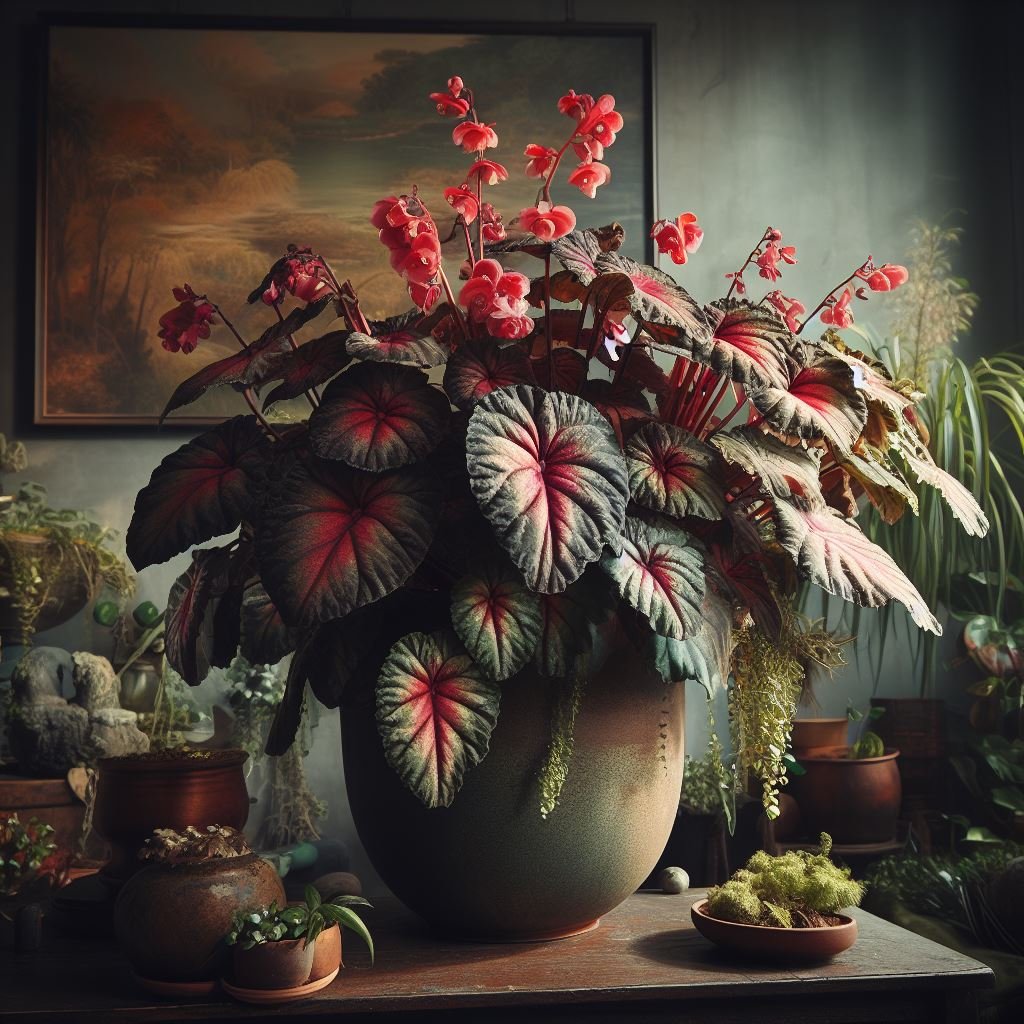
Begonia Grandis Care Tips
Caring for Begonia grandis is essential to maintain its health and beauty. Here are some valuable care tips to help you cultivate this charming plant successfully.
1. Choosing the Right Location
Select a location with filtered or dappled sunlight, as Begonia grandis thrives in partial to full shade. It’s best to avoid direct sunlight, which can scorch the delicate leaves.
2. Soil Requirements
- Begonia grandis prefers well-draining, organic-rich soil. A mixture of peat moss, perlite, and compost works well. Ensure the soil is consistently moist but not waterlogged.
3. Watering Schedule
Maintain a regular watering schedule, keeping the soil consistently moist but not soggy. During the growing season, water when the top inch of soil feels dry to the touch.
4. Humidity and Temperature
Begonia grandis thrives in high humidity, so consider using a humidity tray or a room humidifier, especially if you live in a dry climate. It prefers temperatures between 65-75°F (18-24°C).
Table: Quick Reference Care Guide for Begonia Grandis
| Care Aspect | Requirements |
|---|---|
| Light | Partial to full shade |
| Soil | Well-draining, organic-rich soil |
| Watering | Keep soil consistently moist, not waterlogged |
| Humidity and Temperature | High humidity, 65-75°F (18-24°C) |
Begonia Grandis Light and Soil Requirements
Light and soil are two crucial factors that significantly impact the health and well-being of Begonia grandis. Understanding these requirements is essential for successful cultivation.
Light Conditions
Begonia grandis thrives in partial to full shade. It’s essential to provide it with the right amount of filtered or dappled sunlight. Direct sun can be too intense and may damage the delicate leaves. Therefore, it’s best to place your plant in a location that offers gentle, indirect light.
Soil Requirements
The type of soil you choose for your Begonia grandis is also critical. This begonia prefers well-draining soil that is rich in organic matter. A good soil mixture can consist of peat moss, perlite, and compost. This combination not only allows for proper drainage but also provides essential nutrients for the plant’s growth.
Remember to keep the soil consistently moist, but avoid overwatering. Ensure the pot or planting area has proper drainage to prevent waterlogging, which can harm the roots and cause root rot. A well-draining, organic-rich soil will help create a suitable environment for your Begonia grandis to flourish.
Watering Begonia Grandis


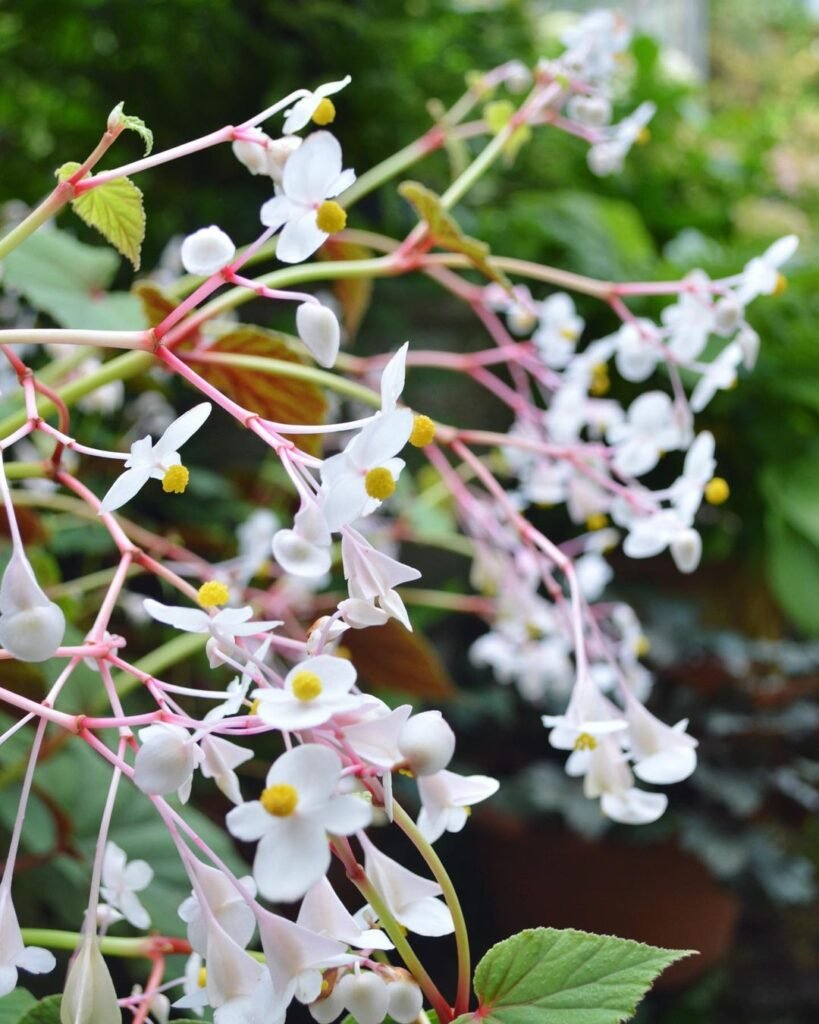
Proper watering is a key aspect of caring for Begonia grandis. Maintaining the right moisture level in the soil is vital for the health and longevity of your plant.
Watering Schedule
- Begonia grandis requires consistent moisture in its soil. During the growing season, which typically begins in late spring, water the plant when the top inch of soil feels dry to the touch. This might translate to weekly watering in most cases.
Avoid Overwatering
While consistent moisture is essential, it’s equally crucial to avoid overwatering. Soggy soil can lead to root rot and other fungal issues. Always ensure that the pot or planting area has proper drainage to allow excess water to escape.
Use a Saucer
To maintain appropriate soil moisture, you can use a saucer beneath your pot to catch excess water. This will prevent the plant from sitting in standing water, which can be detrimental to its health.
Begonia Grandis Humidity and Temperature
Understanding the humidity and temperature preferences of Begonia grandis is crucial for creating an ideal growing environment.
Humidity
Begonia grandis thrives in high humidity conditions. If you live in a dry climate or are growing your begonia indoors, consider using a humidity tray or room humidifier. Increasing humidity levels can help prevent issues such as leaf browning and drying out.
Temperature Range
Maintaining the right temperature is also essential. Begonia grandis prefers a range of 65-75°F (18-24°C). Keep your plant in a location that remains within this temperature range to ensure its well-being.
By providing the correct light, soil, and maintaining proper humidity and temperature, you’ll create an environment where Begonia grandis can thrive. The next sections will cover additional aspects of caring for this beautiful plant, including fertilization and pruning.
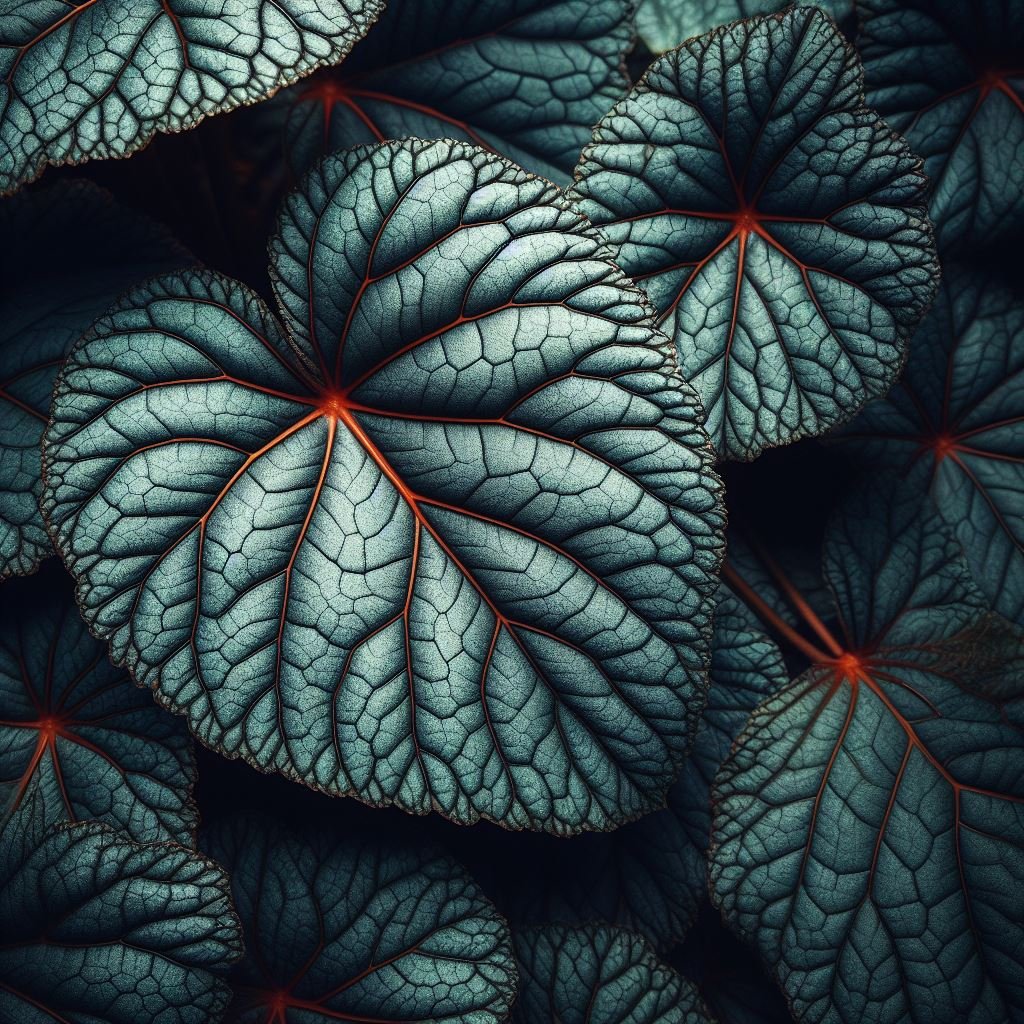
Fertilizing Begonia Grandis
Proper fertilization is crucial to ensure the health and vitality of Begonia grandis. Understanding the right fertilization schedule and the type of nutrients your plant needs is key to its well-being.
Fertilizer Type
- Begonia grandis benefits from a balanced, water-soluble fertilizer. Look for a formula with equal parts of nitrogen, phosphorus, and potassium (e.g., 10-10-10 or 20-20-20). This provides the necessary nutrients for healthy growth and blooming.
Fertilization Schedule
During the growing season, which typically starts in late spring, feed your Begonia grandis every 4-6 weeks. Be sure to follow the manufacturer’s instructions on the fertilizer label for proper application rates.
Avoid Over-Fertilization
While fertilization is essential, it’s important to avoid over-fertilizing, as this can lead to salt buildup in the soil, causing root damage. Always follow the recommended dosage on the fertilizer package.
Begonia Grandis Pruning and Shaping
Pruning and shaping your Begonia grandis can help maintain its aesthetic appeal and control its growth.
Deadheading
Regularly remove spent flowers (deadheading) to encourage new growth and more prolific flowering. Gently pinch off the faded blossoms to prevent the plant from putting energy into seed production.
Shaping
To maintain a compact and well-shaped appearance, you can trim or prune your begonia as needed. Focus on removing leggy or overgrown stems to promote a bushier growth habit.
Begonia Grandis Propagation and Repotting

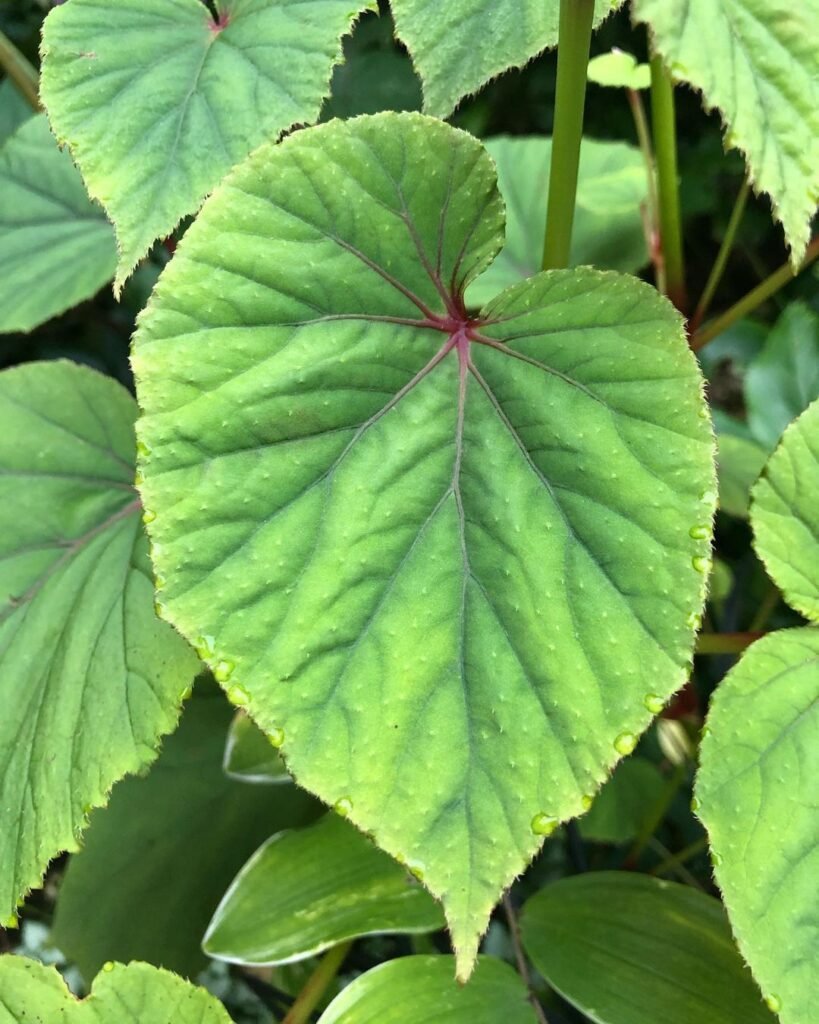
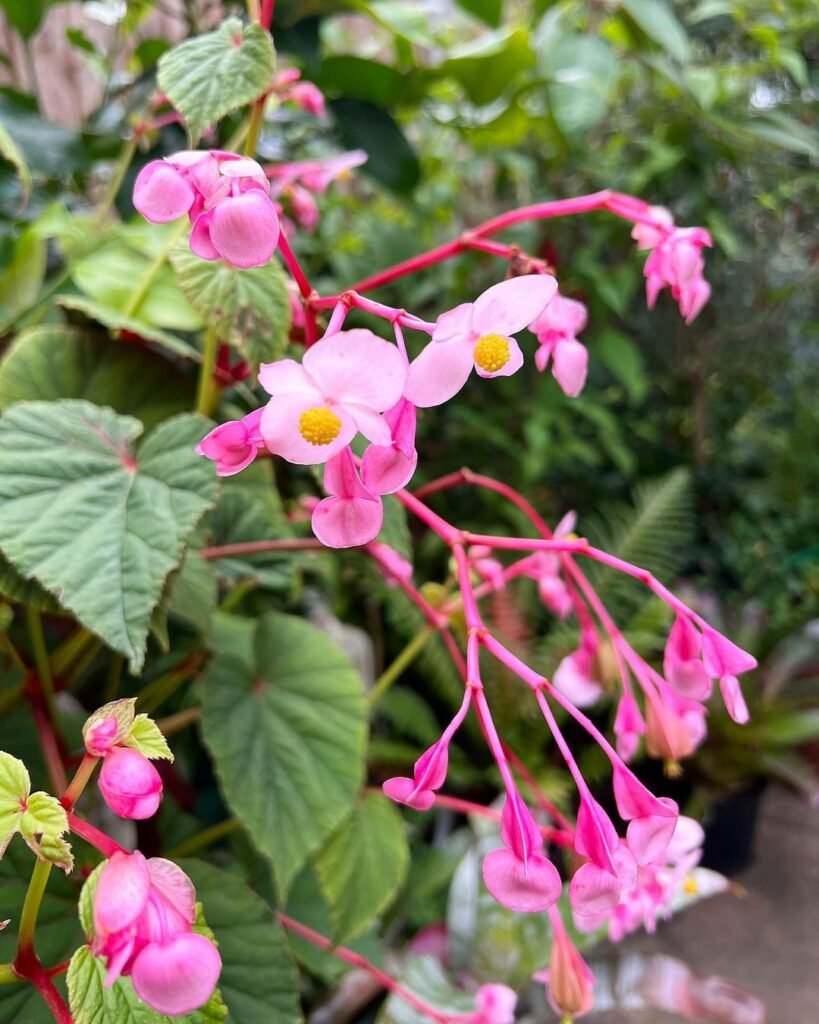
Propagation allows you to create new begonia plants, and repotting ensures the plant has adequate space for healthy growth.
Propagation Methods
Begonia grandis can be propagated through stem cuttings, leaf cuttings, or division. Stem cuttings are a popular method, as they root readily in a well-prepared rooting medium.
Repotting
As your Begonia grandis grows, it may outgrow its current pot. When this happens, carefully repot the plant into a slightly larger container with fresh, well-draining soil. This should be done every 1-2 years or when the plant becomes root-bound.
Table: Quick Reference for Fertilization, Pruning, and Repotting
| Aspect | Recommendations |
|---|---|
| Fertilizer Type | Balanced, water-soluble (e.g., 10-10-10) |
| Fertilization Schedule | Every 4-6 weeks during the growing season |
| Pruning and Deadheading | Regularly remove spent flowers and prune |
| Propagation Methods | Stem cuttings, leaf cuttings, or division |
| Repotting Frequency | Every 1-2 years or when root-bound |
Begonia Grandis Seasonal Care
Begonia grandis requires different care routines throughout the seasons to ensure its well-being and longevity. Let’s explore how to adapt your care practices based on the time of year.
Spring
In spring, as the growing season begins, it’s time to start fertilizing your Begonia grandis. Ensure the soil remains consistently moist, and watch for new growth. If your plant has overwintered indoors, consider gradually acclimating it to outdoor conditions.
Summer
During the summer, your begonia will be in full growth and bloom. Continue to provide regular fertilization, water consistently, and monitor for any signs of pests or diseases. Prune as needed to maintain the desired shape.
Fall
As temperatures start to drop in the fall, reduce fertilization, and prepare your begonia for winter. Consider bringing potted plants indoors if frost is expected, or provide outdoor plants with protection. You can also divide your begonia if it has become crowded.
Winter
In winter, your Begonia grandis may go dormant or experience reduced growth. Reduce watering and allow the soil to dry out slightly between waterings. Keep indoor plants away from drafts and provide them with indirect light.
Table: Seasonal Care Guidelines for Begonia Grandis
| Season | Care Recommendations |
|---|---|
| Spring | Begin fertilization, ensure consistent soil moisture, acclimate indoor plants to outdoor conditions if applicable |
| Summer | Continue regular fertilization, maintain consistent watering, monitor for pests, and prune as needed |
| Fall | Reduce fertilization, prepare for winter, consider division if needed |
| Winter | Reduce watering, protect plants from drafts, provide indirect light for indoor plants |
Adapting your care routine to the changing seasons will help your Begonia grandis thrive throughout the year.
Begonia Grandis Companion Plants
Selecting suitable companion plants to grow alongside Begonia grandis can enhance the aesthetics and overall health of your garden. Here are some excellent choices that pair well with this begonia.
Ferns
Ferns complement Begonia grandis beautifully, as they thrive in similar shaded conditions. The contrast in foliage textures and colors creates an appealing visual harmony.
Hostas
Hostas are shade-loving perennials that pair well with Begonia grandis. Their diverse leaf shapes and sizes offer a pleasing contrast when planted together.
Heucheras
Heucheras, also known as coral bells, add a splash of color to the shade garden. Their vibrant leaves and dainty flowers create an attractive contrast with the begonia’s greenery.
Brunnera
Brunnera, with its heart-shaped leaves and delicate blue flowers, complements the elegance of Begonia grandis. Together, they create a captivating shade garden.
Selecting the right companion plants will not only enhance the visual appeal of your garden but also promote a healthy and harmonious environment for your begonia to thrive.
Pest Control Tips for Begonia Grandis
Despite being a hardy plant, Begonia grandis can still be susceptible to various pests. Being proactive in pest control is crucial to maintaining the health of your begonia.
Common Pests
Some common pests that may affect Begonia grandis include aphids, mealybugs, and spider mites. Regularly inspect your plants for signs of infestation, such as yellowing leaves, sticky residue, or tiny webbing.
Organic Solutions
For mild infestations, you can use natural remedies like neem oil or insecticidal soap. These products are safe for both your begonia and the environment. Apply them according to the manufacturer’s instructions.
Preventative Measures
Preventing pest infestations is just as important as treating them. Keep your garden clean, and regularly remove dead leaves or plant debris, as pests often hide in these areas. Additionally, avoid overwatering, as overly moist soil can attract certain pests.
By implementing these pest control tips, you can keep your Begonia grandis healthy and thriving without the interference of common garden pests. The next sections will cover how to revive a sick or wilting begonia and conclude the comprehensive guide.
Reviving a Sick or Wilting Begonia Grandis
A sick or wilting Begonia grandis can be distressing, but with the right care and attention, you can nurse it back to health. Here are some steps to follow when reviving a struggling begonia.
Assess the Issue
Identifying the problem is the first step. Is the begonia suffering from overwatering, underwatering, or a pest infestation? Carefully examine the plant to pinpoint the issue.
Adjust Watering
If the problem is related to watering, adjust your watering routine accordingly. For overwatering, allow the soil to dry out slightly before watering again. If underwatering is the issue, increase the frequency of watering, ensuring the soil remains consistently moist but not waterlogged.
Prune Damaged Parts
Trim away any damaged or yellowing leaves, stems, or flowers. This not only improves the plant’s appearance but also redirects its energy towards healthier growth.
Treat for Pests
If pests are the cause of the issue, apply appropriate pest control measures. Use organic solutions like neem oil or insecticidal soap and follow the recommended application guidelines.
By addressing the problem promptly and providing the right care, you can nurse your Begonia grandis back to its vibrant, healthy state.
Love all types of Begonia? Make sure to catch up on my post on how to care and grow for beefsteak begonia. After you’ve finished reading that, why not also check out my care guide on how to grow begonia amphioxus.
Conclusion
In conclusion, Begonia grandis is a charming and resilient plant that can grace your garden or indoor space with its unique appearance. Understanding its care requirements, from light and soil to seasonal care, can help you cultivate a thriving begonia.
With the right knowledge and attention, you can enjoy the elegance of Begonia grandis year-round, whether it’s in full bloom during the summer or gracefully weathering the winter months.
By following the guidelines provided in this comprehensive guide, you can ensure the longevity and vitality of your Begonia grandis and enjoy the beauty it adds to your botanical collection.
FAQS
How often should I water my Begonia Grandis?
Water your Begonia grandis when the top inch of soil feels dry to the touch. During the growing season, this may mean weekly watering.
Can I grow Begonia Grandis indoors?
Yes, you can grow Begonia grandis indoors. Place it in a location with filtered light, maintain humidity, and provide consistent moisture.
When is the best time to fertilize Begonia Grandis?
Fertilize your Begonia grandis every 4-6 weeks during the growing season, which typically starts in late spring.
How do I revive a wilting Begonia Grandis?
To revive a wilting begonia, assess the issue (overwatering, underwatering, or pests), adjust watering, prune damaged parts, and treat for pests as needed. Tailor your care based on the problem you identify.

Writer/Green Thumb/Explorer – Rooted deep in the rich soils of Devon, I’ve cultivated a vast expertise in plant care, helping greenery thrive in homes across the UK. When I’m not crafting detailed plant care guides, I’m journeying through the lush landscapes of the West Country, unearthing nature’s secrets and sharing them with fellow plant enthusiasts. Every leaf has a story, and I’m here to tell it.





